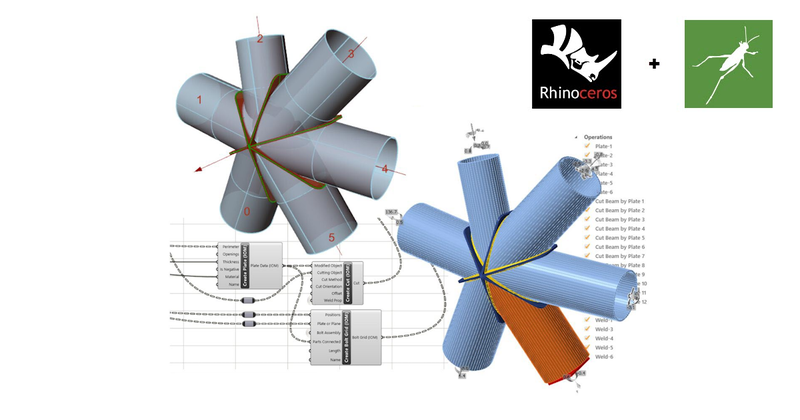Parametric design in IDEA StatiCa - Offshore structure example!
VIDEO: Tutorial for Parametric design in IDEA StatiCa by Lukas Juricek from IDEA StatiCa, illustrated with an example from an offshore structure.
In this video guide and tutorial, Lukas Juricek from IDEA StatiCa demonstrates how to run a parametric study on a stiffened steel connection (offshore structure example) using the software’s Developer Mode and REST API.
By linking a Python script to an IDEA StatiCa model, engineers can automate design iterations, identify optimal dimensions (like plate thicknesses), and reduce manual trial-and-error.
Why automate connection optimization?
IMAGE: Offshore structure connection
Structural engineers working on offshore, industrial, or heavy steel projects are often required to balance code compliance with material efficiency.
Optimizing connection details—like stiffener plate thickness—can help reduce weight and cost, but doing so manually through the GUI may be time-consuming when multiple design options need to be evaluated.
By using a parametric approach and automating the iteration process, engineers can:
✔ Explore a wider range of design options in less time
✔ Gain a clearer understanding of how design variables affect structural performance
✔ Maintain consistent input and output handling across simulations
This approach also aligns well with design environments where scripting and integration with other tools (like Python, Excel, or BIM platforms) are part of the workflow.
Enabling parametric control in IDEA StatiCa
IMAGE: Entering the Developer tab in IDEA StatiCa to access the parameters
The process starts by enabling Developer Mode in IDEA StatiCa, which unlocks parameter definition tools within the project.
In the video, Lukas creates a parameter for the thickness of an inner stiffener plate. This parameter can then be referenced programmatically, allowing the model to respond to external input values during batch runs.
TRAINING COURSE:
Parametric Design in IDEA StatiCa
Learn parametric design—from native IDEA StatiCa functionality to advanced Python scripting or Rhino 3D with Grasshopper!
Running the REST API Locally
IMAGE: Python script that will run the parametric study with IDEA StatiCa
Next, the IDEA StatiCa REST API is started by launching IdeaStatiCa.ConnectionRestApi.exe from the software’s installation directory.
This sets up a local API endpoint (on localhost:5000) that external scripts can interact with to open projects, adjust model parameters, trigger calculations, and retrieve results.
Driving Iterations with Python
The core of the workflow shown in the video is a Python script that loops through a predefined set of plate thicknesses. For each thickness:
The script loads the model
Updates the stiffener thickness
Runs a new analysis
Extracts the resulting maximum Von Mises stress
The results are compiled into a simple graph that shows how stress values change with thickness.
IMAGE: Results after the parametric study with IDEA StatiCa
From this, Lukas identifies the thickness that results in the highest stress just below the material yield limit—355 MPa in this case. The selected value (50 mm) balances safety requirements with material efficiency.
Verifying the Result in the GUI
IMAGE: Verifying the detailed results from one of the design variations from the parametric study with IDEA StatiCa.
To confirm the automated findings, Lukas returns to the IDEA StatiCa GUI, inputs the optimal thickness, and runs a final simulation.
The stress result on the critical plate (SP7) comes in at 342.3 MPa, closely matching the automated prediction and confirming the accuracy of the script-driven process.
Further Resources
To explore this workflow further or apply it to your own projects, we recommend the following resources:
Training
Other tips and tricks
OTHER ARTICLES











